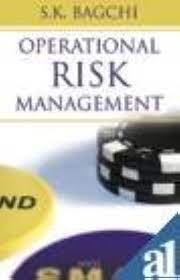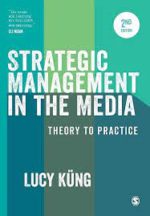Operational Risk is one of the important arms of the risk management triangle, the other two being Credit Risk and Market (Treasury) Risk. Any organisation, particularly in the banking sector, is squarely exposed to operational risks emanating within or outside the organisation.There was no precise definition of operational risk until Basel Accord II came into being in June 2004. For the first time in the history of global banking, operational risk capital charge has been made a mandatory requirement in banking. This certainly puts in a lot of stress and strain on a bank’s management. The entire gamut of operational risk has been visited and covered in the appropriate chapters of this book.
Operational Risk Management Paperback
KSh 1,295.00
Operational Risk is one of the important arms of the risk management triangle, the other two being Credit Risk and Market (Treasury) Risk. Any organisation, particularly in the banking sector, is squarely exposed to operational risks emanating within or outside the organisation.There was no precise definition of operational risk until Basel Accord II came into being in June 2004. For the first time in the history of global banking, operational risk capital charge has been made a mandatory requirement in banking. This certainly puts in a lot of stress and strain on a bank’s management. The entire gamut of operational risk has been visited and covered in the appropriate chapters of this book.
1 in stock
Related products
-
How to Talk So People Listen: Connecting in Today’s Workplace
KSh 1,500.00At a time when it’s harder than ever to get and keep people’s attention, we could all use some help. Enter Sonya Hamlin, author of the now classic How to Talk So People Listen (1988), and one of the country’s leading communication experts. In this revised and updated edition, Sonya Hamlin, arguably America’s leading communication expert, shows us how to successfully capture people’s attention so that they listen, understand,…
-
How to Make the Most of Your Workday
KSh 890.00This revised and updated edition of How to Make the Most of Your Workday will help you learn how to work smarter, not harder. It is packed with tools, techniques, advice, and activities to help you permanently change the way you work and live.
This book will also show you:
-Why you aren’t getting things done and how you can change this.
-How to reduce daily stress and anxiety.
-How to create more leisure time.
-How to mange your time, prioritize you list, meet your goals, and make all your efforts more successful and rewarding.
-How to conquer one of today’s major productivity killers-procrastination-once and for all. -
How the World Sees You: Discover Your Highest Value Through the Science of Fascination
KSh 2,995.00Unlock your unique strengths with How the World Sees You. Learn the science of fascination to maximize your personal brand and highest value.
Sally Hogshead believes the greatest value you can add is to become more of yourself.
Hogshead rose to the top of the advertising profession in her early 20s, writing ads that fascinated millions of consumers. Over the course of her ad career, Sally won hundreds of awards for creativity, copywriting, and branding, and was one of the most awarded advertising copywriters right from start of career, including almost every major international advertising award.
She frequently appears in national media including NBC’s Today Show and the New York Times. Hogshead was recently inducted into the Speaker Hall of Fame, the industry’s highest award for professional excellence. Her advertising work hangs in the Smithsonian Museum of American History.
The science of fascination is based on Hogshead’s decade of research with 250,000 participants, including dozens of Fortune 500 teams, hundreds of small businesses, and over a thousand C-level executives.
-
How Brands Become Icons: The Principles of Cultural Branding
KSh 2,795.00Coca-Cola. Harley-Davidson. Nike. Budweiser. Valued by customers more for what they symbolize than for what they do, products like these are more than brands–they are cultural icons. How do managers create brands that resonate so powerfully with consumers? Based on extensive historical analyses of some of America’s most successful iconic brands, including ESPN, Mountain Dew, Volkswagen, Budweiser, and Harley-Davidson, this book presents the first systematic model to explain how brands become icons. Douglas B. Holt shows how iconic brands create “identity myths” that, through powerful symbolism, soothe collective anxieties resulting from acute social change. Holt warns that icons can’t be built through conventional branding strategies, which focus on benefits, brand personalities, and emotional relationships. Instead, he calls for a deeper cultural perspective on traditional marketing themes like targeting, positioning, brand equity, and brand loyalty–and outlines a distinctive set of “cultural branding” principles that will radically alter how companies approach everything from marketing strategy to market research to hiring and training managers. Until now, Holt shows, even the most successful iconic brands have emerged more by intuition and serendipity than by design. With How Brands Become Icons, managers can leverage the principles behind some of the most successful brands of the last half-century to build their own iconic brands. Douglas B. Holt is associate professor of Marketing at Harvard Business School.
-
Organizational Behavior, Theory, and Design in Health Care 2nd Edition by Nancy Borkowski (Author)
KSh 9,380.00Due to the vast size and complexity of the U.S. health care system―the nation’s largest employer―health care managers face a myriad of unique challenges such as labor shortages, caring for the uninsured, cost control, and quality improvement. Organizational Behavior, Theory, and Design, Second Edition was written to provide health services administration students, managers, and other professionals with an in-depth analysis of the theories and concepts of organizational behavior and organization theory while embracing the uniqueness and complexity of the healthcare industry. Using an applied focus, this book provides a clear and concise overview of the essential topics in organizational behavior and organization theory from the healthcare manager’s perspective.
-
Strategic Management in the Media: Theory to Practice
KSh 7,560.00′Küng’s book stands out for its focus on concepts, drivers, and dynamics. Its scope and learning are brilliant and dazzling. This updated edition will be a source of insight for students and a tool for industry veterans who seek the perspective of academia.′
– Eli Noam, Columbia Business School′A landmark contribution to scholarship, Küng’s excellent book provides an empirically rich and analytically sharp-sighted guide to contemporary organizational strategies in a complex and dynamic media environment.′
– Gillian Doyle, University of Glasgow′In the age of relentless technological disruption, unlimited distribution and non-professionalization, media firms are more dependent than ever on strategic management. Küng articulates the dimensions of media industries to account for an ever-increasing array of challenges and strategies.′
– David Craig, University of Southern CaliforniaIn this Second Edition of a book many found invaluable for research and teaching, including myself, Küng accomplishes a challenging task: to preserve all the best qualities of the First Edition while both extending the scope and deepening understandings about strategic management theory in application to media industries.′
– Gregory Ferrell Lowe, University of TampereWith the media industries facing unprecedented change and challenge from top to bottom, it has never been more vital to understand the elements of strategy and how they apply to media organizations.
This new edition:
- Shows innovation, disruption and strategic adaptation in action, with a stronger focus on a case-based approach
- Takes readers deep into case studies on BuzzFeed, The Guardian, Netflix, the New York Times and the BBC
- Explains strategic theory and concepts with insight and clarity
- Shows how to understand change and decision-making within media organizations.
This is the essential guide to change and management in the media industries – ideal for students of media studies, media economics and media management.
-
Strategic Management
KSh 1,295.00This comprehensive text provides fundamental and broad knowledge about strategic management and policy. It offers a thorough, state-of-the-art treatment of the critical business skills that are required to plan and manage strategic activities and business policies in todays corporate world. It introduces the readers to the various tools and techniques being used by the firms competing in the national, as well as in the global economy. The book has been enriched with examples and brief descriptions given as Strategic Memo in each chapter. The case studies given at the end of the book can be used to teach and discuss a comprehensive
-
Sales Essentials: All You Need to Know to Be a Successful Salesperson-From Cold Calling and Prospecting with E-Mail to Increasing the Buy and Closing – Softcover11
KSh 1,195.00Having trouble closing your deals? Hitting a frustrating plateau with your sales numbers? Feel that upselling is a lost cause? Let sales guru Stephan Schiffman drive your sales pitches up a notch with his tried-and-true techniques – and get results immediately! Stephan Schiffman’s Sales Essentials includes time-tested tips on: Mastering the cold call Using email as a selling tool Raising the stakes to “up” your next buy Closing the deal – every time! Plus, you’ll also find 50 surefire questions to ask to make deal after deal, year after year. Packed with insider information you need to beat the competition, you can’t afford not to read Stephan Schiffman’s Sales Essentials!










Be the first to review “Operational Risk Management Paperback”